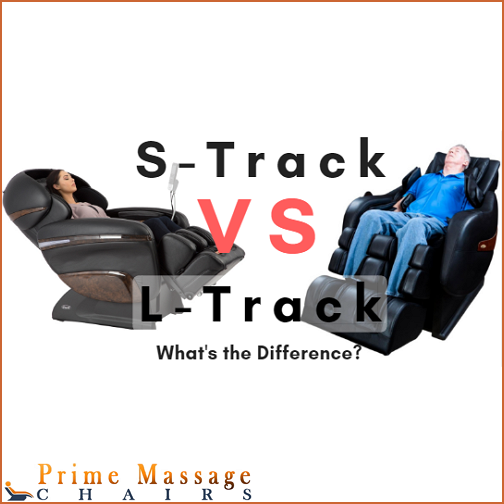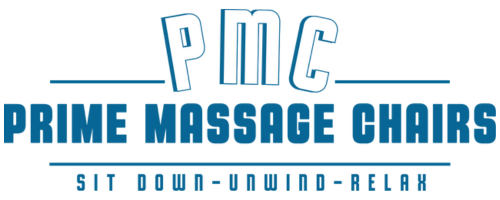
S-Track vs. L-Track Massage Chairs
S-Track or L-Track, which massage chair is right for me? This is a question that we get asked often and with good reason. You should be certain of which roller track will work best for you and in this short blog we hope to answer this all-important question for you.
S-Track or L-Track?
- Massage Chair History
- Massage Chair Benefits
- What are Roller Tracks?
- S-Track Massage Chairs
- L-Track Massage Chairs
- Conclusion
Massage Chair History
Massage chairs have been around for decades. Japan is a country that is the most popular for manufacturing massage chairs that get imported all over the globe. Quite frankly, massage chairs are much more common today than they were just a decade ago.
Back in 2010, massage chairs were considered a luxury item that not many people could afford. Now with all of the available financing offers and more massage chairs to choose from, massage chairs are much more available to those that want or need them.
Massage Chair Benefits
Now imagine a scenario where you get home from work after a long day. You kick off your shoes and sit in your luxury massage chair and get a nice relaxing heated massage while enjoying a snack and watching television. Sounds amazing, doesn't it? Well, this is where massage chairs come in handy and perhaps that is why they are so popular today.
A massage chair relies on a simple idea. They include devices on the inside, which mechanically work and provide sensations of a massage to the person sitting in the chair. While some chairs only have a few vibrating elements, others make use of rather complex machinery in order to mimic the techniques of a human massage therapist.
What are Roller Tracks?
Massage chairs tend to have long roller tracks that start from the head and move down to the lower back. In some models, they even go down to the buttocks and the hamstrings. In massage chairs that operate mechanically, it is the job of these rollers to do most of the massaging tasks. This massage is particularly done to the spinal areas of the body.The rollers that travel along the track move in a vertical and a lateral direction to mimic the touch of a human massage specialist. This makes tapping and kneading possible. At the same time, there are a number of roller tracks that allow backward and forward movement. These are known as 3D roller massagers.
As far as the shape of the track is concerned, there are two types. These include the S-track and the L-track.
S-Track Massage Chairs
Nowadays, most of the massage chairs are S-track massage chairs which simply follow the shape of the human spine. Based on the S-track's sinusoidal shape, the rollers move up and down along the back of the user while following the natural curvature of the spine.
The roller starts at the top of the neck in a forward position until it reaches the mid back where it retracts a bit and then moves forward again. This results in a very natural massage sensation for the user.
The reason why roller tracks are not designed as a straight line is that the spine itself has a natural curvature to it. In case the roller tracks were a single straight line, the neck and the back would become strained rather than getting relaxed. Unfortunately, the earliest versions of massage chairs used to have a straight-line roller rather than a curved one.
L-Track Massage Chairs
The L-track massage chairs are relatively new, and they have been around for only a handful of years. The first prototype of the L-track roller was displayed in Las Vegas where the prototype had rollers that went under the seat. Although the prototype did not have the title of an ‘L-track' roller, it soon got its name due to the path that the rollers follow.
Later, the first similar model formally with the title of ‘L-track’ hit the market not so long ago. As a result of this new technology, everyone had their attention drawn towards it especially in the shopping malls and public areas.
Since then, there have been several more models and brands of ‘L-track’ rollers. Personally, we believe that the L-track is a great step forward in the world of massage chairs within a decade.
In formal terms, the L-track roller is also referred to as the extended roller track. It is simply an extension of S-track rollers with an added path that goes below the lower back and reaches down to the buttocks and hamstrings. In other words, the L-track continuously moves from the head down to the hamstrings which generate the sensation of a full body massage.
It is quite impressive that previously, the seat only used to include airbags for massage. Today, however, you've got a full body massage within a seat that reaches down to the hamstrings. On top of that, many massage chair models have sections for a foot massage which can be very enjoyable especially with heat.
If you have been suffering from sore buttock or hamstring muscles, the L-track massage chair can be a very beneficial addition to your living room. This can be especially beneficial for those who suffer from sciatica near the pelvic muscles or conditions such as the piriformis syndrome.
Conclusion
When getting a massage chair, most people think that the L-track rollers will lack the features of the S-track. However, as we have mentioned in this article, this is not true. In fact, the L-track roller is nothing other than an extension of the S-track roller.
The only difference between an S-track roller and an L-track roller is that the S-track roller is extended from the neck to the lower back, whereas the L-track roller extends from the neck to the glutes or hamstrings depending on the model.
If you haven't done so you'll want to read our easy to follow massage chair buyers guide which will help guide you to the right massage chair.
Now that you're more informed about which roller track is right for you, consider shopping with us. Always Free Shipping, 6 Month Low Price Guarantee and No Tax in most states are some of the benefits of shopping with PrimeMassageChairs.com.
Have more questions? You can contact us by email or live chat, or simply call us at 800-566-2798.
Disclaimer:
We do not provide medical advice. The content of this article, including text, graphics, and other material, is for informational purposes only. It is not intended to be a substitute for professional medical advice, diagnosis, or treatment. Always seek the advice of your physician or other qualified health provider with any questions you may have regarding a health condition. Never disregard professional medical advice or delay in seeking it because of something you have read in this article or on our website.
